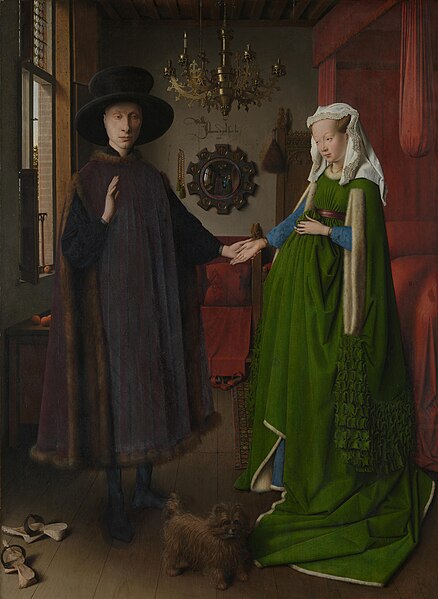Until today, I'd heard only the traditional view, that Chamberlain was silly for believing Hitler. But upon reflection, what I heard today makes a lot more sense. The wikipedia article at http://en.wikipedia.org/wiki/Neville_Chamberlain#Legacy_and_reputation offers both sides of the story.
Something else we heard today was that during WW II, relationships were formed much more quickly than had been usual before that. Young people would meet in Trafalgar Square -- scandalously, without regard to social class, level of education, etc. -- and take the short walk to St James's Park, which was not mowed during those years. London suffered nightly bombings 57(?) days in a row at one point, which made people ever more aware that tomorrow we may die. Besides disregarding class, some of these young people even ignored nationality (how many thousands of British married Americans during the war?) -- and England (indeed the world) was never the same.
Hearing this, I immediately thought "Of course!" though I wouldn't ever
have come up with the insight myself.
Not nearly as important...
but we had lunch at The Two Chairmen, a nice pub at the end
of Lewisham St. (really an alley) where it meets Old Queen Street. The address
seems to be 39 Dartmouth St.; more location info
here.
In the National Gallery
Our guide, the superb Tom Hooper, explained several paintings hanging in the National Gallery; I remember some of his comments on two of them. The first, which you see at right, was the Arnolfini Portrait. Tom's comments were not quite the same as what Wikipedia says, and you can look up the latter, so I'll try to relate what Tom told us. First, the man is considerably older than his wife. She's wearing green, not an expensive color (Wikipedia says it's fur-lined, indicating its expense). Tom also pointed out that the man is wearing fur, but not the most expensive fur; he's of the merchant class and has done well. The girl is not pregnant, but she's got enough of a belly to show she's been eating well; lifting her green outer garment, we see that her inner garment reaches to the floor (further emphasizing the wealth of her husband-to-be).By the way, the perspective and realism of the painting (note the convex mirror along the back wall) were what one would expect for the period (dated 1434 by Van Eyk), but this sort of technique hadn't made it to England by then.
One interpretation of the painting holds that the girl is afraid because of the high expectations placed upon her (at this time: to bear sons), communicated by the ample but not extravagant clothing she wears, by the age difference, by her submissive posture. The dog (man's best friend; most faithful creature) suggests the husband expects faithfulness from his new wife (or -to-be). The picture may document a betrothal (note the date/signature on the rear wall).
The idea of this picture as documenting the new/prospective husband's possessions (does he consider the girl as one of them?) and expectations is rather a mind-blower to me. As a father of daughters I find it offensive, but I also understand that the world often is and was that way.
Tom also interpreted for us "An Allegory of Venus and Cupid," seen here at left. The painting was evidently a "gift" for Francis I of France. Here's my recollection of his interpretation.
Cupid (Eros), son of Aphrodite (Venus), is here fondling his mother's breast and kissing her on the lips -- a kiss she's returning. An act of incest is about to happen, which Oblivion (upper left corner, with eyeless sockets) is trying to cover up. Father Time (upper right, with hourglass on his shoulder) is trying vehemently to foil oblivion -- suggesting that in time, one's sins will find one out.
Cupid's posture is unnatural (as the act of incest would be?) and he's about to step on a bird (a European swallow??); there's a girl on the right side of the painting also with a very unnatural (impossible) posture: she seems to be looking over her left shoulder at us (that's her left hand holding something near Venus's left arm). The girl's right hand holds a scorpion's tail (or something resembling it), and her left foot (near the right foot of the rose-clutching boy) is some sort of animal's paw -- so she's not really a normal human girl but some sort of mixed creature; foot of a wolf?, tail of scorpion, hands and head of a girl.
The old woman(?) in agony, whose head is below Venus's right elbow, may represent syphilis, which according to some accounts eventually killed Francis I.
Putting together syphilis on the left, the scorpion's tail on the right, and Father Time at top, one might think the painting a warning against indiscriminate sex: the danger of disease, the eventual exposure of the deed, and a (delayed) sting. Personally, I suspect that Cupid's unnatural and uncomfortable posture (Venus's too) suggests a great deal of discomfort may accompany the act itself.
Rather a shocking message to send with a gift; I tend to think it rather a
futile gesture, but who knows? Maybe it was sent with good intent (Proverbs 24:11;
James 5:20). Whatever the motive, the intensity of the painting's message
rather shocked me.
Supper




No comments:
Post a Comment